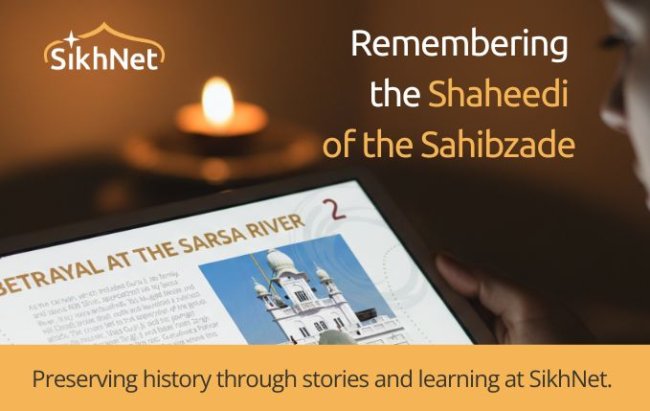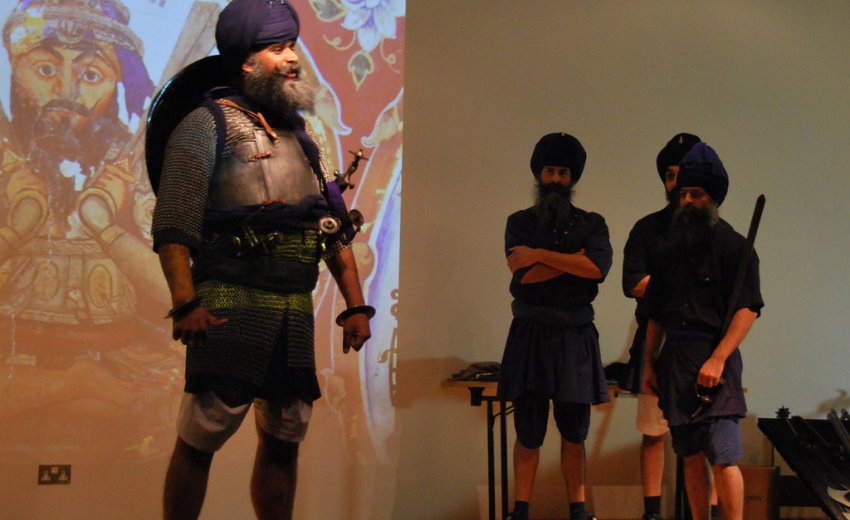In the British Midlands, a former factory worker might just be the last living expert in the ancient Sikh art of shastar vidya, a combat technique passed down through generations. Now, he's on a mission to find someone to carry on this tradition.
Significance of Shastra Vidya
Shastar vidya, which means the "science of weapons," revolves around a five-step strategy: move toward the opponent, strike from the side, block incoming attacks, gain control of the situation, and deliver a decisive blow. This martial art was crafted by Sikhs in the 17th century during times of conflict with hostile neighbouring Muslim and Hindu communities. After the British imposed restrictions on Sikhs bearing arms in the 19th century, knowledge of shastar vidya dwindled to a few practitioners.
Nidar Singh, a 44-year-old from Wolverhampton, used to pack food but is now believed to be the last master of shastar vidya. Though he has numerous students but mastering shastar vidya requires years of dedication and effort, which doesn't fit well with today's busy lifestyles.
"I've traveled all over India and I have spoken to many elders, this is basically a last-ditch attempt to flush someone out because if I die with it, it is all gone."
He says that he would be thrilled to find a master in India or a young student passionate about learning the art.
Nidar Singh’s journey
Until he turned 17, he didn't know much about his Sikh background. His family wasn't religious, and he looked like any British teenager with short hair and regular clothes. He enjoyed wrestling but knew nothing about martial arts.
Growing up, he split his time between Punjab and Wolverhampton. It was during a visit to see his aunt in India that he met Baba Mohinder Singh, the elderly man who became his mentor. Already in his early 80s, Baba Mohinder Singh had abandoned life as a hermit in a final effort to find someone to pass on his knowledge to.
"When he saw my physique he looked at me, even though I was clean-shaven and he asked me: 'Do you want to learn how to fight'," recalls Nidar Singh. "I couldn't say no."
On his first day of training, an elderly man gave Mr. Singh a stick and told him to try hitting him. But when Mr. Singh attempted, the master effortlessly threw him around like a rag doll.
"He was a frail old man chucking me about and I couldn't touch him," he says. "That definitely impressed me.
For 11 years, Mr. Singh lived on his aunt's farm, starting his days by milking buffalos and dedicating his time to training with his master. After this period, he returned to Britain in 1995 to tie the knot and found a job packing food in a factory. Alongside his factory work, he delved into the teachings of shastar vidya and delved into the early military history of Sikhs.
His passion for teaching shastar vidya grew, and he attracted enough students to pursue teaching full-time. Today, he travels across the UK conducting classes. Additionally, he shares his knowledge in Canada and Germany, responding to the enthusiasm of eager learners who seek to understand Sikh military history.
"The people who are here are open-minded," he says. "I have Muslims and Christians here as well as Sikhs."
Even his best students have just started fighting him using weapons without getting injured. Shastar vidya, often mistaken for Gatka, a stick-fighting style from the British era in Punjab, was popular among Sikh soldiers. Unlike Shastar vidya, Gatka was created for performance rather than real combat and was simpler to practice in public.
In 1606, following the murder of Sikh leader Guru Arjan Dev by the Mughal emperor, Guru Hargobind initiated the militarization of Sikhs. Men were directed to bear arms, including the kara and kirpan still worn by orthodox Sikhs today. Long hair was wrapped around the head for skull protection. Hargobind established schools to train the elite Akali Nihang, known as the immortal crocodiles, who developed secretive fighting techniques. Alongside, they embraced a distinctive belief system, making martial art a central tenet of their faith. Shastra Vidya reflects the fusion of spirituality and armed preparedness within Sikh culture.
Mr. Singh faces resistance within the Sikh community as he works to revive a tradition abandoned over 200 years ago. His advanced students can now spar with him using weapons without harm. Shastar vidya, often confused with Gatka, originated during the British occupation of Punjab and was practiced by Sikh soldiers. While Gatka was developed for showmanship, Shastar vidya was designed for combat but faded from mainstream practice. Mr. Singh's efforts to revive this tradition encounter resistance within the Sikh community.
He received 84 death threats during his first two years as a teacher. These threats came from other Sikh groups who disagree with the teachings of shastar vidya and the beliefs of the small Nihang sect, which he follows. According to him, the opposition stems from differences in ideology and beliefs within the Sikh community.
"It is not just martial technique, there is a lot of oral tradition and linguistic skills that has to be there as well," he explains.
Nihangs in Sikh culture
Nihangs follow some Hindu beliefs alongside their Sikh practices. They have three holy books instead of one, and these extra texts show Hindu influences. Also, many Nihangs eat meat and drink alcohol. They also traditionally consumed bhang, a cannabis drink, to feel more connected to the divine.
"Sikhism has gone through several stages of evolution," says Christopher Shackle, a former professor of South Asian studies at Soas, University of London. "When the Nihangs were formed at the end of the 17th Century they were a very powerful group but they became rather marginalised."
When the Sikhs formed their kingdom led by Maharaja Ranjit Singh, they understood the importance of a strong military to defend against British encroachment. To modernize their army, Ranjit Singh enlisted former officers from Napoleon's army to train his soldiers, leaving the Nihangs, traditional Sikh warriors, somewhat sidelined.
Following the defeat of the Sikh kingdom by the British Raj in 1849, Sikhs were compelled to surrender their weapons, which further marginalized the Nihangs. Davinder Toor, a weapons collector and historian, explains that the British enforced a harsh policy, permitting troops to shoot on sight, particularly targeting individuals wearing blue turbans and carrying firearms.
Mr. Singh travels extensively to India and Pakistan, exploring the art and heritage while seeking out descendants of the Akali Nihang. He is on a mission to expand his collection of weapons and knowledge. Throughout his journeys, he has encountered only four individuals who could be considered masters of the art, all of whom have since passed away. The last of these masters, Ram Singh, whom he met in 1998, passed away four years later.
Parmjit Singh, who has collaborated with Mr. Singh on various books about Nihang culture, describes Nidar Singh as a figure who seems to have stepped out of the 18th century. He sees him as a living connection to the past, a window into bygone eras.
Furthermore, Nidar Singh aspires to be a gateway to the future, paving the way for new generations of practitioners to carry on the tradition. He remains dedicated to preserving and promoting this rich cultural heritage.
*Based on an article by Stephanie Hegarty, published in BBC World on 1st November 2011

